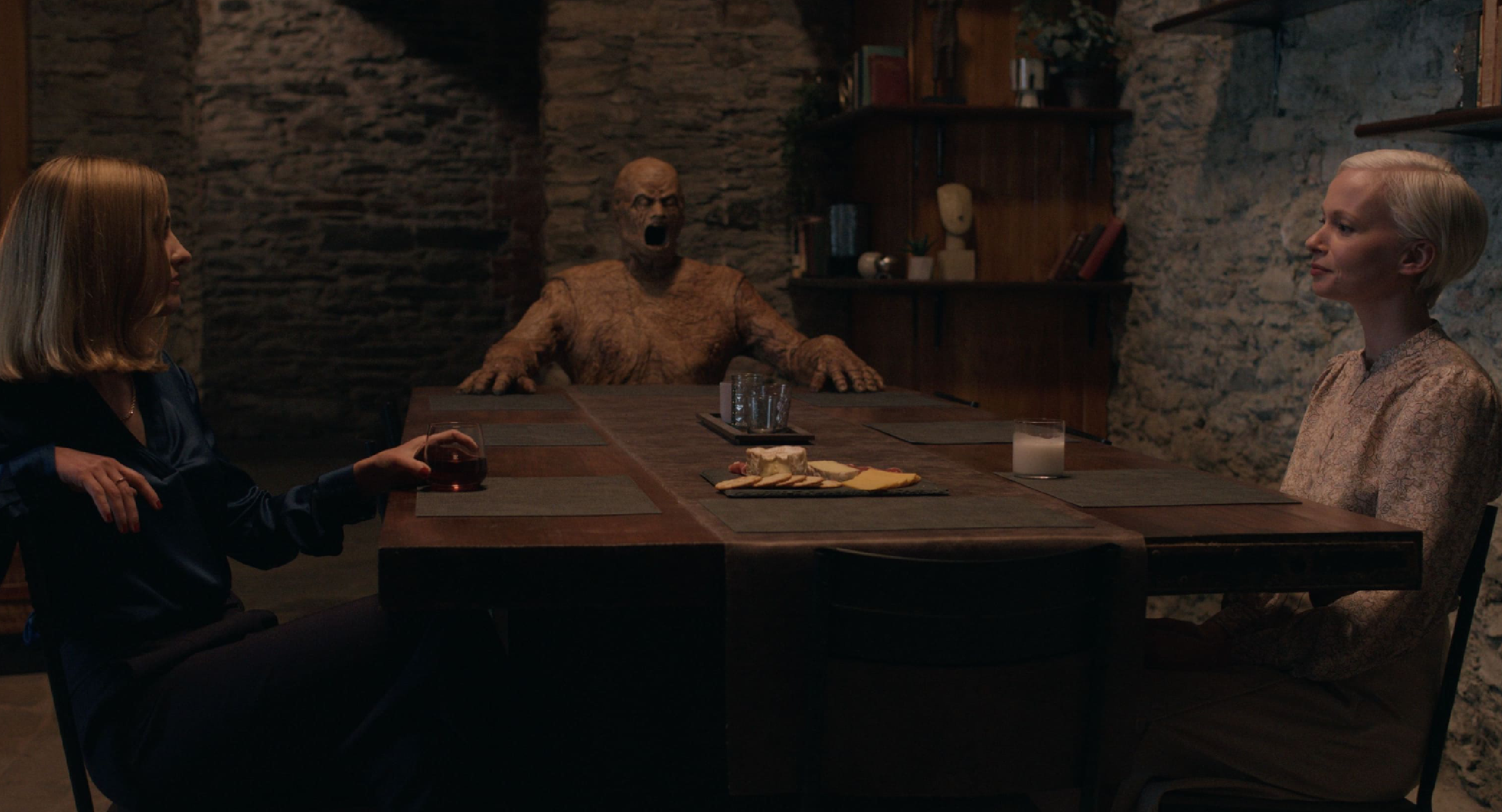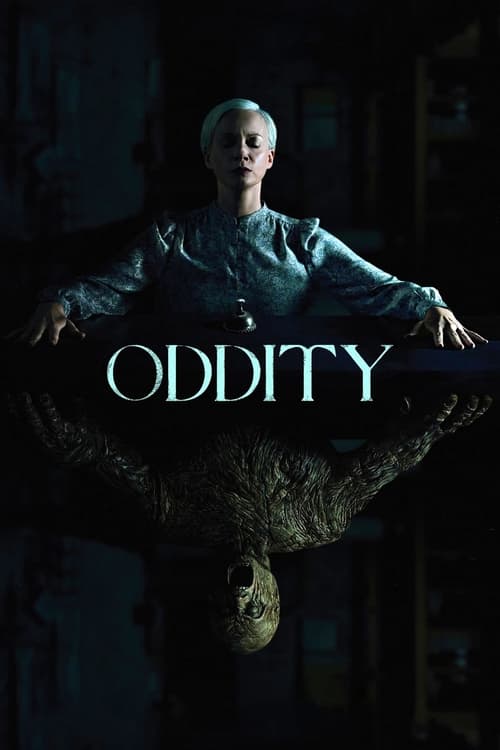Oddity – Film Review
Published August 21, 2024

Oddity is a supernatural thriller written and directed by Damian Mc Carthy, set against the atmospheric backdrop of rural Ireland. This film weaves a tale of grief, betrayal, and vengeance, centered on Darcy Odello, a blind medium with psychometric abilities. Mc Carthy’s narrative delves into the dark recesses of the human psyche, exploring how unresolved trauma and buried secrets can manifest into tangible horrors.
From the opening scenes, Oddity establishes a chilling mood, with its shadowy, creaking country house and the eerie silence of the countryside. The film’s setting plays a pivotal role, almost becoming a character in itself. The house, filled with dark corners and whispering walls, serves as a perfect stage for the unfolding of the supernatural elements that drive the story forward. Mc Carthy’s direction and the cinematography work hand in hand to create a claustrophobic atmosphere, where every creak and groan of the house could signify the approach of something malevolent.
Carolyn Bracken delivers a compelling dual performance as both Dani and Darcy, the twin sisters around whom the plot revolves. Her portrayal of Darcy, the blind medium, is particularly notable. Bracken embodies the character’s grief and determination, making her struggle feel personal and raw. Darcy’s blindness adds an extra layer of tension to the film; her reliance on her other senses and psychic abilities heightens the suspense, as the audience is left to imagine what might be lurking just out of her reach.
Gwilym Lee, as Ted Timmis, also offers a nuanced performance. Ted’s character is complex, balancing between the facade of a caring husband and the darker aspects that slowly unravel as the plot thickens. The dynamic between Ted and Darcy is the heart of the film, with their interactions teetering between uneasy cordiality and underlying hostility. Lee’s portrayal of Ted’s inner turmoil and eventual descent into paranoia is one of the film’s highlights.
The introduction of the wooden mannequin from Darcy’s cabinet of curiosities is where Oddity veers into more traditional horror territory. The mannequin, with its lifeless gaze and unsettling presence, becomes a symbol of the unresolved mysteries and the supernatural forces at play. Mc Carthy uses the mannequin effectively to escalate the tension, with its inexplicable movements and the strange objects hidden within it adding to the film’s creeping dread.
Mc Carthy’s screenplay is methodical, with a slow-burn approach that gradually builds suspense. The narrative is rich in detail, weaving together the psychological and supernatural elements seamlessly. However, this slow pacing might not appeal to all viewers. The film takes its time to reveal its secrets, and while this allows for a deeper connection with the characters, it also means that some moments feel drawn out. For those who prefer a faster-paced thriller, this might be a point of contention.
One of the film’s strengths lies in its sound design. The use of silence is particularly effective, with long stretches of quiet amplifying the tension. When sound is used, it’s done sparingly but to great effect. The creaking of floorboards, the rustling of leaves, and the eerie chime of the haunted bell all contribute to a soundscape that keeps the audience on edge.
Thematically, Oddity explores the idea of grief as a catalyst for horror. Darcy’s mourning for her sister and her determination to uncover the truth about Dani’s death drives the narrative. This emotional core gives the film depth, grounding the supernatural elements in a story about loss and the lengths one might go to for closure. The film also touches on themes of betrayal and guilt, particularly in the character of Ted, whose secrets slowly come to light as the plot unfolds.
However, Oddity is not without its flaws. While the film’s atmosphere and performances are strong, the plot occasionally stumbles under the weight of its own ambitions. Some of the story’s twists and turns, while intriguing, feel underdeveloped, leaving the audience with more questions than answers. Additionally, the film’s resolution might come across as unsatisfying for those expecting a more conclusive ending. Mc Carthy seems to prefer leaving certain elements ambiguous, which might frustrate viewers looking for clear-cut answers.
Another point of critique is the character of Yana, played by Caroline Menton. While she serves as a foil to Darcy, her role feels somewhat underutilized. Yana’s presence in the film seems more like a plot device than a fully realized character, and her interactions with Darcy, though tense, lack the depth found in other parts of the narrative. This leaves her character feeling somewhat extraneous to the central plot.
Visually, Oddity is a haunting experience. The cinematography, with its muted color palette and careful framing, enhances the film’s unsettling tone. The use of light and shadow is particularly noteworthy, creating a visual contrast that mirrors the film’s thematic exploration of hidden truths and buried secrets. The country house, with its labyrinthine corridors and hidden nooks, is shot in a way that makes it feel both expansive and claustrophobic, adding to the film’s sense of unease.
Oddity is a film that excels in atmosphere and character-driven storytelling. Damian Mc Carthy has crafted a supernatural thriller that, while not perfect, offers enough chills and psychological intrigue to keep viewers engaged. The film’s slow pacing and occasional narrative missteps might not make it a universal crowd-pleaser, but for those who appreciate a methodical build-up and a story steeped in mood and tension, Oddity is worth a watch. It’s a film that lingers in the mind, much like the ghostly presence it portrays, leaving viewers pondering the fine line between reality and the supernatural long after the credits roll.
